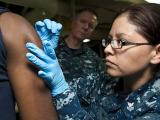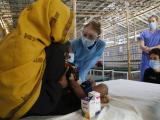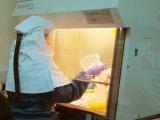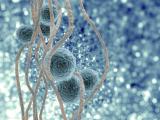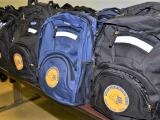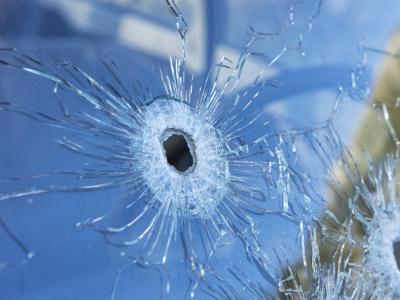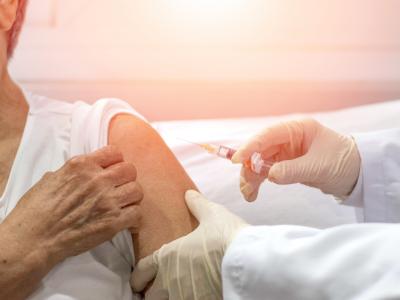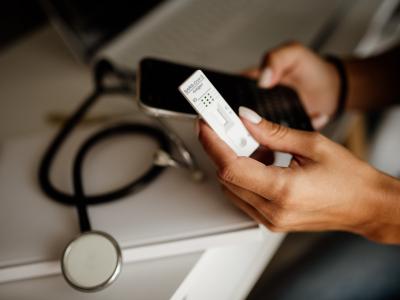Sep 6, 2007 (CIDRAP News) – The head of Texas A&M University today promised a vigorous effort to correct safety infractions uncovered by federal investigators in the university's biodefense laboratory and voiced a hope that research at the lab can resume by the end of this year.
Eddie Davis, the school's interim president, responded for the first time today to a report from the US Centers for Disease Control and Prevention (CDC) that detailed a long list of safety violations at the biodefense lab. Meanwhile, information about more problems at the lab emerged from documents released yesterday by the university.
On Sep 4 the CDC released a report of an investigation that was prompted by three instances of workers who were infected by or exposed to two category B bioterrorism agents. In one incident, a woman was infected with Brucella after cleaning an aerosol chamber; in another, three workers were exposed to Coxiella burnetti. The three incidents were first uncovered by the Sunshine Project, an Austin, Texas, group that monitors biodefense labs.
The CDC suspended the lab's research on select agents in July when the Sunshine Project exposed the safety violations it found through its Texas freedom-of-information requests. In releasing its inspection report, the CDC said the ban would remain in effect until Texas A&M corrects the safety problems and the lab clears another CDC inspection. The school could also face penalties from the US Department of Health and Human Services (HHS), which has funded the lab.
At a news teleconference today, Davis said the university had spent the last 2 days reviewing the CDC report to make sure that the school's plans to remedy the problems are consistent with the investigators' findings.
"First, we are grateful to the CDC for providing this comprehensive view of the steps necessary to rebuild our select agent and toxin research program at Texas A&M," Davis said. "We will use it as our road map to full compliance."
He reiterated that the university has already begun to correct the problems and has brought in outside experts to help with the process. "This will continue at full speed until we have achieved compliance," he said.
"We will be reporting back to the CDC in a matter of days," Davis said, adding that he hopes CDC investigators will return for another site visit this fall and that work at the lab can resume by the end of the year.
Davis said he wasn't surprised by anything in the CDC report, because the investigation team shared many of its findings at an exit conference during the July site visit.
The myriad safety problems at the lab probably stemmed from an inadequate level of expertise in the lab, he said. "And we're putting that in place," he said.
Two university officials have recently resigned in the wake of revelations of the lab's safety problems. Brent Mattox, who supervised lab and infectious disease inspections in Texas A&M's environmental health and safety department, stepped down on Aug 31, according to an Associated Press (AP) report today. Soon after the inspectors' visit, Richard Ewing, the university's vice president for research, resigned from his post, the AP report said.
Davis said an investigation is ongoing into one of the report's findings—that three vials of select agents were missing. "We've received no information that this is anything other than an inventory issue," he said, noting that the lab typically has 35,000 vials of select agents in its inventory.
To address some of the lab security concerns CDC investigators raised, Davis said, the university has installed swipe-card systems and video cameras.
In related developments, Texas A&M released several more documents to the Sunshine Project yesterday, totaling 3,862 pages. Some of the documents, which are available on the Sunshine Project's Web site, mention that flooding occurred at the facility on Feb 22, but a damage inspection was not completed until 2 months later.
At the press conference, Davis said he was not aware of the flooding and damage at the lab.
The documents also contain an April 2004 report of another lab worker who was exposed to Brucella, and it doesn't appear the incident was reported to the CDC. The worker was a graduate student who accidentally injected her hand with the agent, the documents show. She immediately saw a doctor and received antibiotic treatment.
However, at the press conference, Davis said he wasn't aware of any infected or exposed lab workers other than the four that were reported earlier.
The documents state that the 2004 incident occurred before Texas A&M had developed clear procedures for reporting, investigating, and monitoring lab accidents, and that such procedures are now in place and employees are trained how to properly respond.
Davis said that though issues relating to the lab's safety infractions have been difficult for the university, he hoped some good would come of the revelations and remedies, such as improvements in the CDC's inspections of all the biosafety labs under its jurisdiction. "An outcome is that our lab will become a model program for select agent work," he said.
See also:
Sep 5 CIDRAP News story "CDC details problems at Texas A&M biodefense lab"

